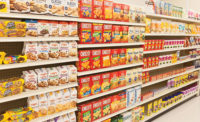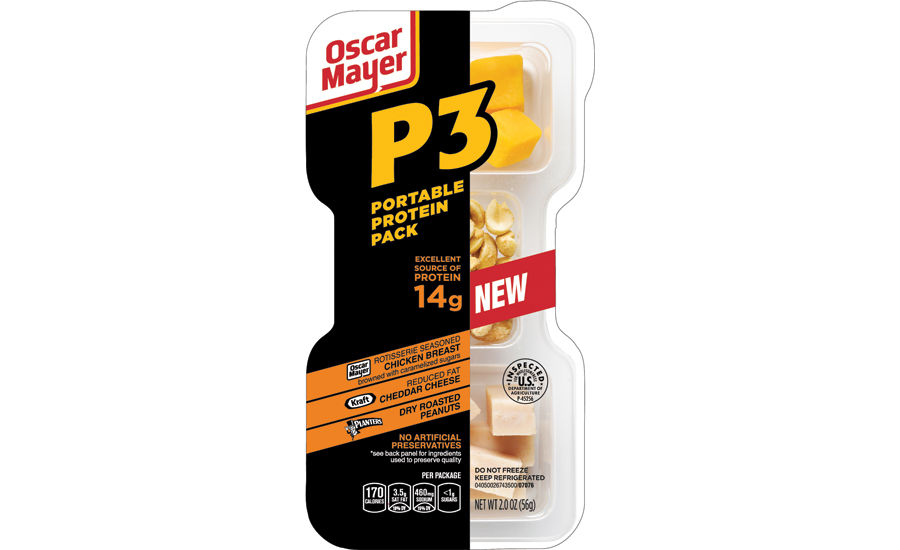Thinking like a Consumer from the "Outside-In" for New Product Success


Successful new brands have strong and ownable visual equities. They defy category conventions, create contrast and demand attention at the shelf.

Although Colgate Optic White was launched within the conventional toothpaste box, the graphics are simplified (to highlight the proposition), and a foil finish helps to reinforce a premium positioning.

Successful line extensions such as Oscar Mayer’s P3 and Campbell’s Go! Soup take familiar products into new usage situations. They encourage brand users to consume products more frequently, thus growing brands and categories.

Pack resealability resonates for shoppers because it directly impacts the price/value equation (by ensuring product freshness and reducing waste).







New products are a focus of virtually every major company. They regularly involve enormous investments in product development, consumer research and marketing, plus huge time commitments across organizations. Yet far too many innovations ultimately fail in market: In fact, more than 80 percent of new product launches are no longer on the shelf after only 24 months. Moreover, this figure hasn’t changed significantly in 40 years. Clearly, most companies are not getting noticeably better at bringing their innovations to market.
At PRS, we know that many of these new product disappointments are tied to “breakdowns” at the shelf. Frequently, we find compelling concepts are not translated into packaging that cuts through shelf clutter, conveys the proposition and drives trial. With that thought in mind, this article speaks to common sources of NPD failure, shares successful strategies for innovation and suggests how marketers can improve their processes and more consistently develop winning packages for new products.
FOUR BARRIERS TO SUCCESS
Of course, there are many different reasons why a new product may fail to meet sales expectations, including pricing, distribution and competitive response. However, in our experience across many categories, we have seen four common themes emerge, all of which link to packaging-related issues:
1. They get lost at shelf.
Many new products never cross that first hurdle of active consideration and thus never create the opportunity to sell. Or, as we say at PRS, “unseen is unsold.” This challenge is not surprising: Most innovations have very few shelf facings, and very few people come to the shelf “looking for” a particular new product. On the contrary, most people shop typical FMCG categories on autopilot, and it requires quite an effort to break them from their grab-and-go shopping routines.
When NPD packaging mimics the visual cues of existing brands, it reduces the likelihood of breaking through and being considered.
2. They don’t clearly convey the proposition.
An innovation may be a terrific idea that tests well in a concept statement with the benefit of several paragraphs of explanation. But when it comes to packaging, the challenge is to clearly get this point across within five seconds. If in that time shoppers don’t know what’s unique about the product or aren’t entirely clear as to what they are getting, they will nearly always avoid taking a chance on something new.
When marketers overload NPD packaging with too many claims, it reduces the likelihood that the proposition will come across quickly and clearly.
3. They don’t grow the brand or the category.
Increasingly, it is not enough for a new product to drive trial: It needs to win market share and, ideally, drive incremental purchases. This is a high hurdle, particularly for large, well-established brands with wide portfolios (such as Tide, Colgate and others), but it is a reality.
When new products are shelved alongside products from their parent brand, it increases the likelihood of cannibalization.
4. They don’t deliver on consumers’ expectations.
Finally, we encounter some cases in which a compelling package drives trial but also creates expectations (of taste, efficacy, etc.) that are not met by the product. Shoppers are quickly disappointed and unlikely to ever repurchase.
If new products are tested in isolation (without branding or packaging), it increases the likelihood of a disconnect when consumers purchase and first try the product.
“INSIDE-OUT” VS. “OUTSIDE-IN”
Why do these patterns persist and NPD failure rates remain so high? We believe the answer is rooted in how companies approach innovation — and a core paradox between the marketer and shopper:
Marketers typically develop new products from the “inside-out.”
They spend significant amount of time and money on product development and concept testing, looking for winning formulas. Once they do find a truly compelling idea, they inevitably race to get it to market. The timeline to develop packaging is cut short, and any shopper or pack research is often compromised in the interests of time (and on the premise that packaging for innovations is lower risk than re-stages of established brands).
Shoppers typically encounter new products from the “outside-in.”
They first come upon new products in store, on a cluttered shelf and within a competitive context. Packaging is their primary source of awareness and information — and almost inevitably, it shapes their perceptions, expectations and interest. If it fails to break through clutter, shoppers will never engage. If it fails to clearly differentiate, people will mentally check out and default to familiar options. As we say at PRS, “the package is the product” to the shopper. Yet, packaging — arguably the single most important marketing vehicle — is the very decision that’s rushed and compromised at the end of the development process.
WHAT WORKS: LEARNING FROM THE SUCCESS STORIES
Given the challenges outlined above — and the long odds against new products — it is worthwhile to study winning innovations and look for commonalities. While there’s no single formula for success, we have seen several consistent themes emerge:
1. Many of the most successful new brands and sub-brands break the mold of the category in their appearance and create ownable visual equities.
When we consider successful new brands such as U by Kotex, 5 Gum and Gevalia coffee, the commonality is that they have strong and ownable visual equities. From a design perspective, they defy category conventions. They create contrast and demand attention at the shelf and avoid the single most common pitfall for new products: blending in to the category. In many cases, such as Kraft’s MiO, this contrast comes from combining breakthrough graphic design with unique shapes. In others, such as Colgate Optic White, the contrast comes from a unique finish. Although it was launched within the conventional toothpaste box, the graphics are dramatically simplified (relative to category conventions), and a foil finish helps to reinforce a premium positioning and differentiate the new brand’s appearance on a visceral level.
For marketers and designers, the implication is clear: New brands represent an opportunity (and perhaps a necessity) to push their creativity and invest in proprietary packaging.
2. The most successful line extensions are often linked to new pack structures and usage occasions.
For a line extension to create growth, it needs to drive incremental purchase and use. Often, this comes from structural innovation: When we consider successful line extensions such as Campbell’s Go! Soup and Oscar Mayer’s P3, the commonality is that they repackage familiar products and take them into new usage situations. They encourage current brand users to consume products more frequently, growing brands and product categories. The 60-piece upright Big-E-Paks (across many Wrigley gum brands) are one example, as they have sparked growth within an otherwise declining gum category. A related path to increased consumption is greater visibility within the home: That’s why fridge packs (for beer, soda and ketchup, among other products) have consistently proven successful. If products are visually lost in the cupboard or closet, they aren’t used and repurchased.
To drive growth, marketers should invest in innovations that extend brands to new usage situations and increase their visibility in consumers’ homes and lives.
3. The most consistently valued pack innovations are those that tie to product freshness.
For innovations to truly resonate with consumers, they need to provide tangible functional benefits and solve a perceived problem. Without question, the problem we hear about most frequently from consumers is wasted product. When people can’t fully use what they’ve purchased (because it has gone stale, or perhaps a pack has broken), it is an understandable source of frustration. Thus, we’ve consistently found that pack resealability resonates because it directly impacts the price/value equation. Pack innovations such as Chips Ahoy! Snack’n Seal and Maxwell House Flavor Lock Pack have had a direct positive impact on sales.
Pack innovation efforts should focus on the factors, such as resealability, that link most directly to shoppers’ priorities.
DRIVING SUCCESS: A BEST-IN-CLASS INNOVATION PROCESS
What can companies do to systematically increase success rates for innovations? In addition to the more tactical solutions shared above, we’d offer three best practices that can help prevent common mistakes:
1. Start in the store and home to identify promising opportunities for innovation.
At PRS, we’ve been using digital ethnography (via smartphones, online bulletin boards, etc.) to connect with people at the point of purchase and gain a better window into how they interact with products/packs. By tracking the full lifecycle of packaging (from purchase through usage, storage and disposal), we can uncover barriers to purchase and use that may not be verbalized. These issues, frustrations and unmet needs are opportunities for differentiation, often via new pack structures and delivery systems.
2. Build the shelf context into the packaging development, screening and assessment process.
At PRS, we’ve been using our PRS Retail Labs (mini-store environments) to provide an in-aisle context for NPD ideation and screening. Across clients and categories, we’ve found that seeing new products on shelf within competitive context serves as an important reality check to ensure that the packaging (and point of sale material) is creating contrast, drawing initial consideration and, importantly, clearly conveying the proposition. Including the shelf at earlier development stages helps reinforce the importance of retail presentation and encourages teams to view their innovations through the outside-in lens of shoppers.
3. Apply a more holistic approach to testing new product concepts.
At PRS, we’ve been focused on ensuring that our studies mirror the shopper’s outside-in experience, from the shelf (shopping) to the home (using). This starts by having the shoppers initially see/react to the NPD packaging (and perhaps POS support) as they would in store, within a competitive context and without the benefit of a concept statement. It also involves linking packaging and product testing by having consumers try the product after viewing the pack. By doing so, we can help ensure that a new product is properly represented at retail to drive trial — and that the packaging and product delivery are aligned to promote satisfaction and repurchase. Ultimately, it allows us to gauge both the likely incrementality of a new product and its potential source of volume.
Marketers that adopt these best practices — and focus on proven strategies for new product success — are likely to find that their compelling innovations translate to effective packaging and success in market. By thinking from the outside-in and investing in design, we can increase the odds of new product success.
Looking for a reprint of this article?
From high-res PDFs to custom plaques, order your copy today!











